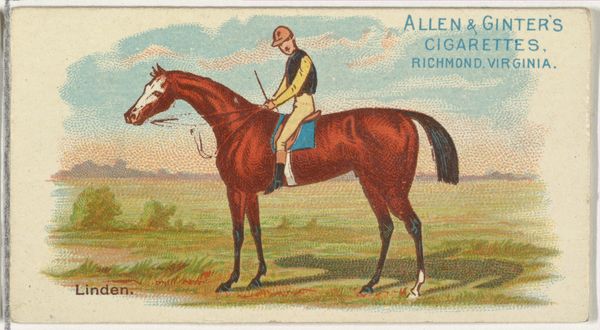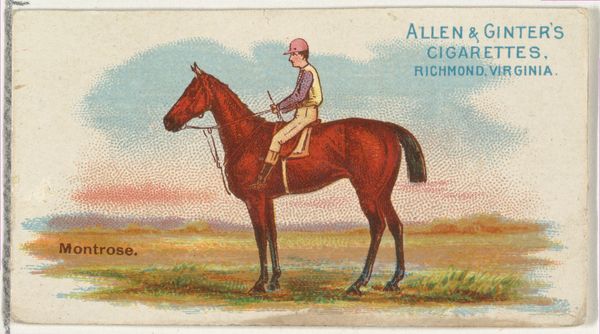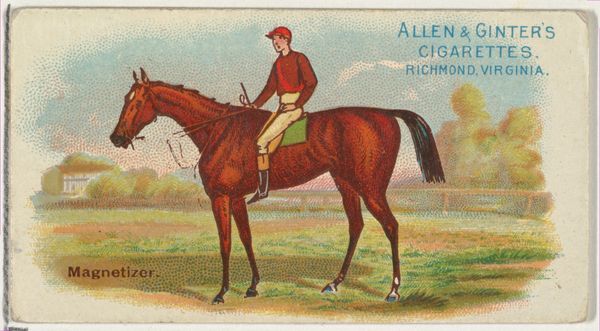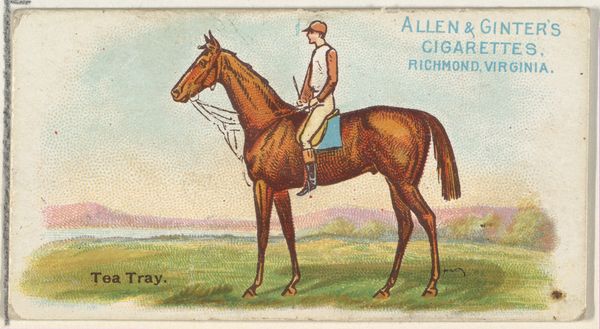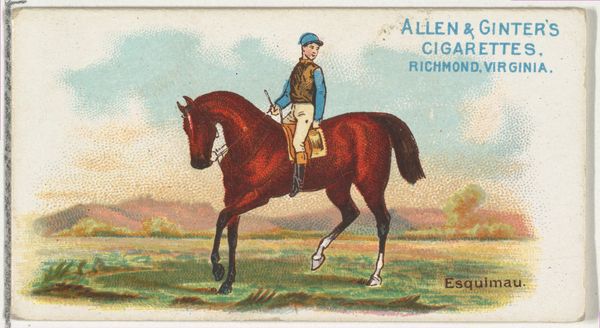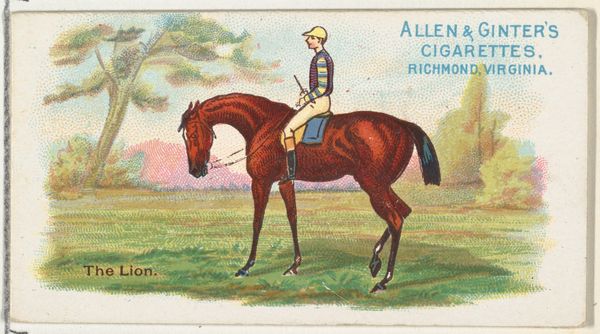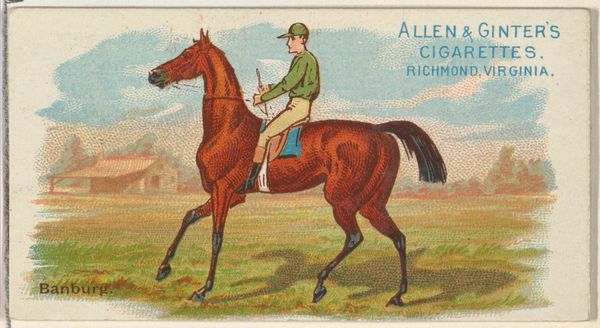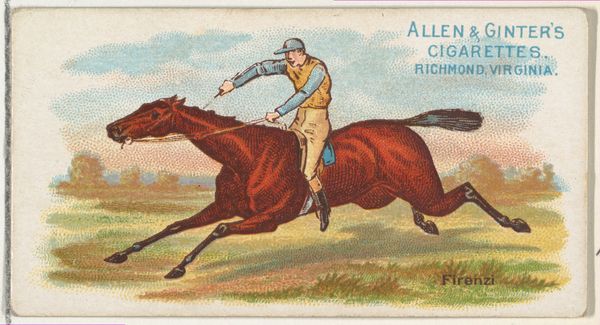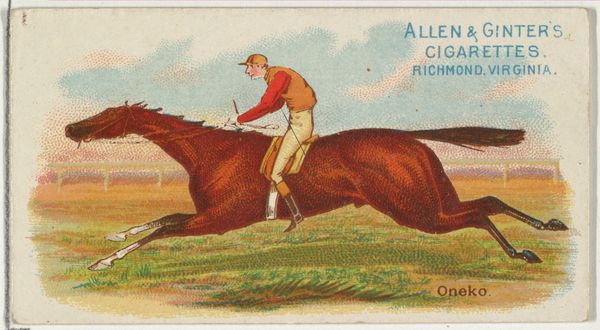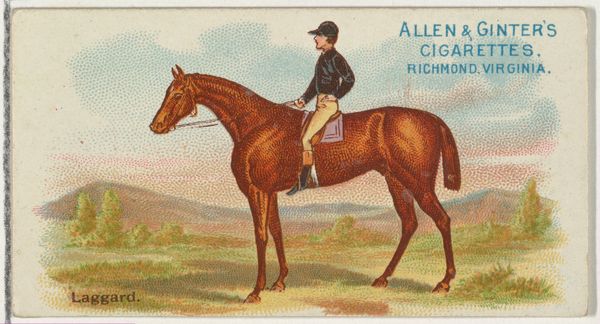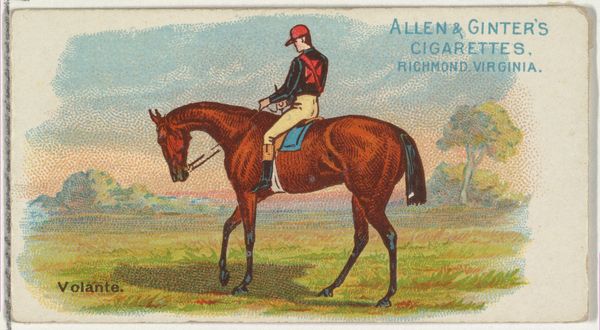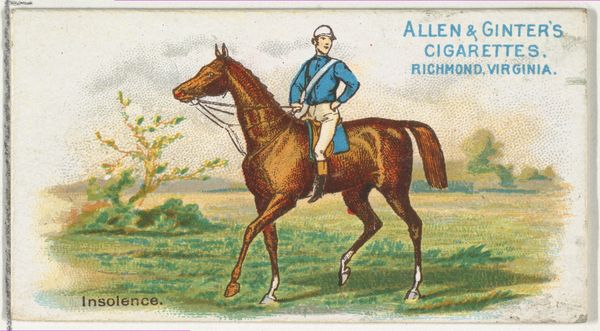
Raceland, from The World's Racers series (N32) for Allen & Ginter Cigarettes 1888
0:00
0:00
drawing, coloured-pencil, print
#
drawing
#
coloured-pencil
# print
#
impressionism
#
landscape
#
coloured pencil
#
orientalism
#
horse
#
men
#
watercolour illustration
#
genre-painting
Dimensions: Sheet: 1 1/2 x 2 3/4 in. (3.8 x 7 cm)
Copyright: Public Domain
Curator: This is "Raceland," a print created in 1888 by Allen & Ginter as part of their "World's Racers" series of cigarette cards. The work is fashioned from coloured pencils and print media. Editor: My immediate reaction is serenity; the muted colour palette of the grass and sky give off pastoral vibe, only mildly disrupted by the rich mahogany brown of the horse itself and the jaunty scarlet of the jockey's outfit. Curator: Right, it's fascinating how these seemingly disparate elements coalesce. Allen & Ginter, a prominent tobacco company of the time, leveraged the burgeoning popularity of horseracing, and Orientalism in design, to promote their cigarettes. It's a form of mass-produced art reflecting and shaping societal interests and aspirations. The image hints at a landscape far beyond American shores. Editor: Definitely, horseracing carried then, as it often does now, heavy symbolic weight: aristocracy, power, the thrill of the gamble and chance. To see it then reproduced for mass consumption via the cigarette card gives it an additional layer of interpretation, though; like an act of democratization. It brings luxury to a popular consumer base through everyday commerce, but even here that democratization does not ring true: the Jockey stands subservient next to the majestic horse. The colonial hierarchy prevails. Curator: Indeed, the means of production and circulation played a key role in constructing cultural perceptions, especially related to leisure and class. The image served not just to sell cigarettes but to create aspiration and imbue the consumer with a feeling of elevated taste. The actual artistic labor—the drawing, the printing—becomes invisible in the promotion of a lifestyle. Editor: Which really serves the double-purpose, on another level, of subtly associating these objects with masculine strength, competition and dominance, subtly promoting the consumption of nicotine through iconic representations, where men conquer new territories both materially and commercially. That the brand name sits right at the top only serves to confirm this idea, but using those visual semiotics allows us to delve a little deeper into what's at play. Curator: Thinking about it, such prints also provided an outlet for artists during a time of nascent industrialization, embedding artisanal practice in capitalist distribution models. A complex exchange. Editor: Well, that's certainly made me see this unassuming cigarette card in a completely different light! Curator: And understanding the material history adds a new perspective to its symbols, enriching its cultural impact beyond a simple sporting scene.
Comments
No comments
Be the first to comment and join the conversation on the ultimate creative platform.
